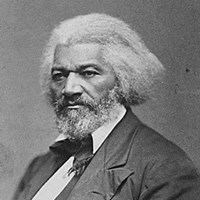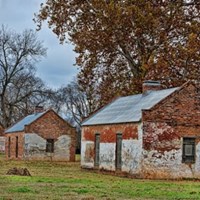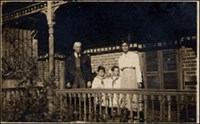- Lesson Plan (19)
- Distance Learning (1)
- Keweenaw National Historical Park (3)
- Chaco Culture National Historical Park (2)
- Mesa Verde National Park (2)
- Aztec Ruins National Monument (1)
- Bent's Old Fort National Historic Site (1)
- Cane River Creole National Historical Park (1)
- Canyon de Chelly National Monument (1)
- Fort Frederica National Monument (1)
- Frederick Douglass National Historic Site (1)
- Show More ...
- Social Studies (19)
- Science (11)
- Literacy and Language Arts (6)
- Math (1)
Showing 20 results for entrepreneur ...
Commercial and Non-Industrial Occupations Pre-Visit Activity 1: Entrepreneurs
Commercial and Non-Industrial Occupations Post-Visit 2: Research Careers of Entrepreneurs
Commercial and Non-Industrial Occupations Post-Visit Activity 1: Discussion and Journaling
Paterson & American Industry
- Type: Distance Learning
- Grade Levels: Upper Elementary: Third Grade through Fifth Grade
Business Ventures
- Type: Lesson Plan
- Grade Levels: Upper Elementary: Third Grade through Fifth Grade
Lewis Garrard's ten-month journey on the Santa Fe Trail put him in contact with merchants and traders during the 1840s when the political climate was shifting with Mexico. This lesson explores the risks, decision-making factors, and consequences of doing business in this region during the fur trade era.
- Type: Lesson Plan
- Grade Levels: Middle School: Sixth Grade through Eighth Grade
Telling the Stories of Pu'uhonua o Hōnaunau
- Type: Lesson Plan
- Grade Levels: Middle School: Sixth Grade through Eighth Grade

Pu'uhonua o Hōnaunau contains many stories of past and present Hawaiian peoples. This lesson couples 3D virtual tours with oral histories, archeological data, and historical information to reveal and explore these narratives. Este plan de clase con actividades incluido también está disponible en español.
Frederick Douglass, The Educator of Anacostia: “Once you learn to read, you will be forever free.”
- Type: Lesson Plan
- Grade Levels: Middle School: Sixth Grade through Eighth Grade

Students will learn about Frederick Douglass’s passion for learning and sharing knowledge with the African-American community. They will use 3D printed replicas to practice skills in primary source research, critical thinking, discussion, and writing. Este plan de clase con actividades incluido también está disponible en español.
- Type: Lesson Plan
- Grade Levels: Middle School: Sixth Grade through Eighth Grade

Students will learn about the challenges that 19th- and 20th-century women faced when choosing a career path. They will then read a biography of Florence Hawley Ellis, one of the earliest American women to break into the male-dominated field of archeology. Este plan de clase con actividades incluido también está disponible en español.
- Type: Lesson Plan
- Grade Levels: Middle School: Sixth Grade through Eighth Grade

Ann Axtell was a prominent archeologist, artist, and author. Ann spent much of her time recording and painting architecture, petroglyphs and pictographs, landscapes, and expedition work. Many of her recording methods are still in use today by modern archeologists. Este plan de clase con actividades incluido también está disponible en español.
Scouts and Shovels: “Crashing the Gates” with Bertha Dutton
- Type: Lesson Plan
- Grade Levels: Middle School: Sixth Grade through Eighth Grade

Bertha Dutton was one of the first female archeologists who worked with the National Park Service. This lesson plan emphasizes her original methodologies and why her work was so important to both women’s history and cultural resource preservation. Este plan de clase con actividades incluido también está disponible en español.
What Did They Eat?: Archeology and Animal Bones
- Type: Lesson Plan
- Grade Levels: Middle School: Sixth Grade through Eighth Grade

This lesson illustrates how archaeologists use faunal analysis, or the study of animal bones, to explore what people in the past ate and how they obtained their food. By applying concepts of taxonomy and scientific classification, it demonstrates how archaeologists use both scientific methods and historical research to interpret past lifeways. Este plan de clase con actividades incluido también está disponible en español.
"Temperature, Clouds and Sun is Weather - Oh, My!"
- Type: Lesson Plan
- Grade Levels: Lower Elementary: Pre-Kindergarten through Second Grade

The program consists of videos, hands-on projects, and observation-based activites. The participant will: Create a cloud headband. Learn about the job of a Meteorologist. Predict tomorrow’s weather. Learn about Martin Van Buren’s year without a Summer. Conduct an experiment to create a cloud in a jar and document the type of cloud by comparing it to a cloud chart. Enjoy some En Plein Air drawing or painting of cloud formations.
- Type: Lesson Plan
- Grade Levels: Lower Elementary: Pre-Kindergarten through Second Grade

The program consists of videos, hands-on projects, and observation-based activites. The participant will: Create a cloud headband. Learn about the job of a Meteorologist. Predict tomorrow’s weather. Learn about Martin Van Buren’s year without a Summer. Conduct an experiment to create a cloud in a jar and document the type of cloud by comparing it to a cloud chart. Enjoy some En Plein Air drawing or painting of cloud formations.
Neither Cold Nor A Harbor: Archeology and a Civil War Soldier’s Experience at the Battle of Cold Harbor
- Type: Lesson Plan
- Grade Levels: Middle School: Sixth Grade through Eighth Grade

In June of 1864, the soldiers at Cold Harbor had to make use of the limited resources they had to survive. They used repurposed materials and their own hands to dig trenches and earthenwork mounds that would protect them from gunfire and mortar shells. This lesson plan combines artifact and map inquiry to learn about the Civil War landscape. Este plan de clase con actividades incluido también está disponible en español.
Atomic Elements and Archeology: Tracing Ancient Resource Access and Trade Routes Using XRF
- Type: Lesson Plan
- Grade Levels: Middle School: Sixth Grade through Eighth Grade

X-ray fluorescence (XRF) is one scientific tool archeologists use to study the chemical composition of artifacts found on a site. This lesson plan illustrates the method behind XRF and describes how the resulting data can illustrate where and how ancient peoples obtained resources, whether through local sources or trade. Este plan de clase con actividades incluido también está disponible en español.
“Nickels to Dollars”: Maggie L. Walker's Quest for African American Economic Empowerment
- Type: Lesson Plan
- Grade Levels: Middle School: Sixth Grade through Eighth Grade

Students will pretend to go back in time to 1903 when Maggie Walker chartered the St. Luke Penny Savings Bank. They will use a 3D replica of, or the computer aided models of, the 1927 Maggie Walker collection bank to learn about the economic tools African Americans used to resist discrimination and uplift their communities during the Jim Crow era. Este plan de clase con actividades incluido también está disponible en español.
Seeing Into the Ground: Archeology and Magnetometry
- Type: Lesson Plan
- Grade Levels: High School: Ninth Grade through Twelfth Grade

Learn how archeologists use geophysical techniques like magnetometry to learn more about ancient objects and people. Explore the scientific process behind magnetometry, including magnetic fields, and how archeologists interpret their results. Complete a simulated magnetometry analysis using data from Knife River Indian Villages National Historic Site. Este plan de clase con actividades incluido también está disponible en español.
Archeology at Fort Frederica
- Type: Lesson Plan
- Grade Levels: Middle School: Sixth Grade through Eighth Grade

Fort Frederica was an 18th-century fort on St. Simons Island, Georgia. Built to defend British colonial territories from Spanish attack, the fort was instrumental in establishing lasting English control over the eastern U.S. This lesson uses 3D models of archeological artifacts and historical information to teach students both about the fort’s important history and how archeological methods uncover it. Este plan de clase con actividades incluido también está disponible en español.






